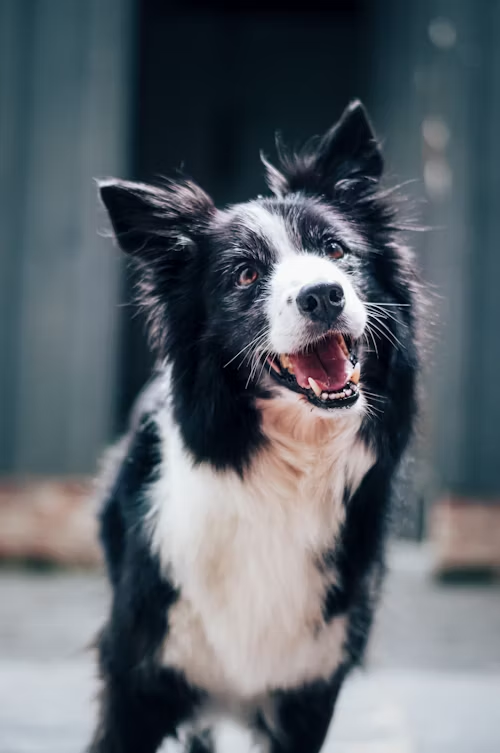Training a Dog to Respect a Cat’s Space: Techniques and Tips

When introducing a dog to a home with a cat, one of the main challenges is ensuring that the dog respects the cat’s space and boundaries. A harmonious relationship between dogs and cats is crucial for a peaceful home environment. This blog provides practical techniques and tips for training your dog to respect your cat’s space and foster a positive relationship between your pets.
1. Understanding the Dynamics
a. Cats and Dogs: Different Social Structures
- Cats: Cats are territorial animals and may become stressed if their space is invaded by a new or overly enthusiastic dog. They prefer to have control over their environment and need their personal space respected.
- Dogs: Dogs are generally more social and may approach cats with curiosity or excitement. Training is needed to help them understand and respect the cat’s boundaries.
b. Observing Body Language
- Cat Signals: Cats use body language to communicate their comfort level and boundaries. Signs such as hissing, arching their back, or swatting indicate that the cat needs space.
- Dog Behavior: Understanding your dog’s body language, such as excessive sniffing or chasing, is crucial for addressing behaviors that may invade the cat’s space.
2. Initial Introductions
a. Controlled Introductions
- Separate Spaces: Initially, keep the cat and dog in separate rooms to allow them to get used to each other’s scents without direct contact. Use baby gates or doors to create barriers.
- Gradual Introduction: Gradually introduce them to each other’s presence by allowing short, supervised interactions. Monitor their behavior closely and reward positive interactions.
b. Positive Reinforcement
- Reward Good Behavior: Reward both the dog and the cat with treats and praise for calm behavior during introductions. This helps reinforce positive interactions and creates a positive association with each other.
- Redirect Attention: If the dog shows excessive interest or attempts to invade the cat’s space, redirect their attention to a toy or command. Reward them for focusing on appropriate behavior.
3. Training Techniques for Respecting Space
a. Basic Commands
- “Leave It” Command: Teach your dog the “leave it” command to help them learn to ignore or move away from the cat’s space. Practice this command with various distractions to reinforce its effectiveness.
- “Stay” Command: Use the “stay” command to keep your dog in a specific spot or distance from the cat. Practice this command in different settings to ensure reliability.
b. Managing Interactions
- Supervised Time: Always supervise interactions between your dog and cat until you are confident in their ability to respect each other’s space. Use a leash or harness to manage the dog’s movements if needed.
- Safe Spaces for the Cat: Provide the cat with high perches or secluded areas where they can retreat if they feel threatened. Ensure these spaces are off-limits to the dog.
4. Addressing Behavioral Issues
a. Preventing Chasing
- Redirect Energy: If the dog is chasing the cat, redirect their energy to a more appropriate activity, such as playing with a toy. Consistently reward them for focusing on the toy instead of the cat.
- Exercise and Enrichment: Ensure the dog receives sufficient exercise and mental stimulation to reduce excess energy that might lead to chasing behavior.
b. Dealing with Aggression
- Identify Triggers: If the dog displays aggressive behavior towards the cat, identify any triggers and address them calmly. Seek the assistance of a professional dog trainer or behaviorist if needed.
- Positive Reinforcement: Reinforce calm behavior and gradually desensitize the dog to the cat’s presence. Avoid punishment, as it can increase anxiety and exacerbate aggression.
5. Creating a Harmonious Environment
a. Establishing Routines
- Consistent Routine: Establish a consistent routine for feeding, exercise, and playtime for both the dog and cat. Predictability can help reduce stress and create a sense of security.
- Separate Resources: Provide separate feeding areas, water bowls, and litter boxes to minimize competition and reduce potential conflicts.
b. Monitoring and Adjusting
- Regular Monitoring: Continuously monitor interactions between your dog and cat, and make adjustments to their routines or training as needed. Watch for any signs of stress or discomfort and address them promptly.
- Positive Reinforcement: Continue to use positive reinforcement to encourage respectful behavior and strengthen the bond between your pets.
6. Consulting Professionals
a. Dog Trainers
- Professional Guidance: Consult a professional dog trainer or behaviorist for personalized advice and training techniques if you encounter persistent challenges with your dog’s behavior towards the cat.
- Behavioral Assessments: Professional trainers can assess your dog’s behavior and provide tailored strategies to improve interactions with your cat.
b. Veterinary Advice
- Health Considerations: Consult your veterinarian if you notice any signs of stress or health issues in either pet. Ensure that both the dog and cat are in good health to facilitate positive interactions.
7. Conclusion
Training a dog to respect a cat’s space requires patience, consistency, and understanding of both animals’ needs and behaviors. By implementing effective training techniques, managing interactions carefully, and creating a harmonious environment, you can foster a positive relationship between your pets and ensure a peaceful home. With the right approach, dogs and cats can coexist happily and respectfully, enhancing the well-being of both.




